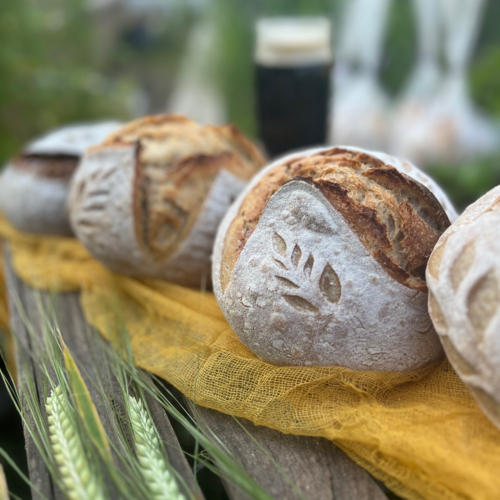
Ancient grains have made a triumphant return to our kitchens, offering a rich history, numerous health benefits, and a distinct flavor profile that modern wheat often lacks. Today, we delve into four remarkable ancient grains—Einkorn, Khorasan, Buckwheat, and Spelt—each bringing unique qualities to the table.
Einkorn Flour
History: Einkorn, known as one of the earliest cultivated forms of wheat, dates back over 10,000 years. Originating in the Fertile Crescent, this ancient grain was a staple in early agricultural societies. Its name, derived from the German words “ein” (one) and “korn” (grain), highlights its single-grained nature.
Benefits: Einkorn is rich in nutrients, boasting higher protein, essential fatty acids, and antioxidant levels compared to modern wheat. It is also lower in gluten, making it more digestible for individuals with gluten sensitivities. Additionally, einkorn contains significant amounts of lutein, important for eye health.
Khorasan Flour
History: Khorasan wheat, also known as Kamut, has roots in ancient Egypt and Mesopotamia. Legend has it that Khorasan grains were found in an Egyptian tomb and brought to the U.S., where they gained popularity in the 20th century. This ancient grain is known for its large kernels and rich, buttery flavor.
Benefits: Khorasan wheat is packed with protein, fiber, vitamins, and minerals, including selenium, which is crucial for immune function. Its high lipid content imparts a creamy texture to baked goods, and its lower gluten content makes it easier to digest than modern wheat.
Buckwheat Flour
History: Despite its name, buckwheat is not related to wheat. Originating in Southeast Asia around 5,000 to 6,000 years ago, buckwheat spread to Europe and Russia, becoming a staple in traditional diets. It is known for its use in dishes like soba noodles and blini.
Benefits: Buckwheat is a powerhouse of nutrition, offering high levels of protein, fiber, and essential amino acids. It is gluten-free, making it suitable for those with celiac disease or gluten intolerance. Buckwheat is also rich in antioxidants and minerals such as magnesium, manganese, and copper, promoting heart health and reducing inflammation.
Spelt Flour
History: Spelt, an ancient cousin of modern wheat, has been cultivated since 5000 BCE in Europe and the Middle East. It was a staple grain in medieval times and has recently regained popularity due to its health benefits and robust flavor.
Benefits: Spelt is highly nutritious, providing a good source of fiber, protein, and essential vitamins and minerals, including iron, magnesium, and zinc. Its slightly nutty flavor enhances a variety of baked goods. Spelt’s gluten structure is more fragile than modern wheat, making it easier to digest for some people with gluten sensitivities.
Ancient Grains vs. Modern Wheat
Nutritional Profile: Ancient grains generally have a higher nutritional profile compared to modern wheat. They offer more protein, fiber, vitamins, and minerals, providing a more balanced and healthful option. Modern wheat has been selectively bred for high yield and ease of processing, often at the expense of nutritional content.
Gluten Content: Ancient grains tend to have lower gluten content and different gluten structures, making them more digestible for many individuals. Modern wheat, on the other hand, has been bred to have higher gluten content, which can cause digestive issues for some people.
Flavor and Texture: The flavor of ancient grains is often more robust and complex, adding depth to baked goods and dishes. Modern wheat, while versatile, lacks the distinctive taste profiles that ancient grains offer.
Sustainability: Ancient grains are typically more resilient to harsh growing conditions and pests, reducing the need for chemical inputs. This makes them a more sustainable choice compared to modern wheat, which often requires intensive farming practices.
Conclusion
Incorporating ancient grains like Einkorn, Khorasan, Buckwheat, and Spelt into your diet not only enhances the flavor and nutritional value of your meals but also connects you to a rich history of human agriculture. These grains provide a more holistic approach to eating, emphasizing quality, sustainability, and health. So, the next time you’re baking or cooking, consider reaching for one of these ancient treasures and experience the benefits and flavors they have to offer.

